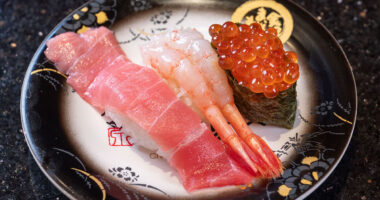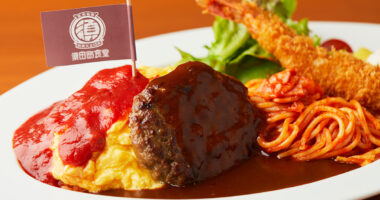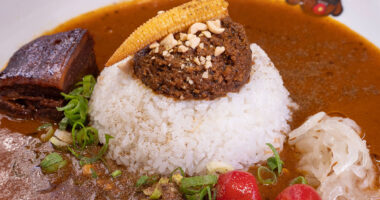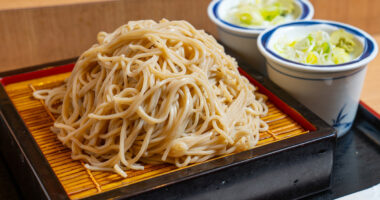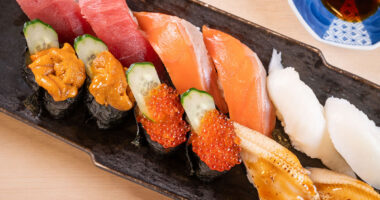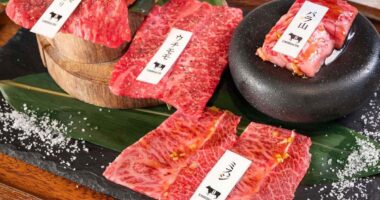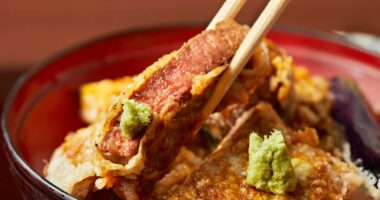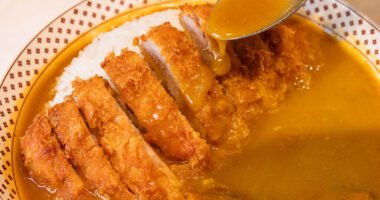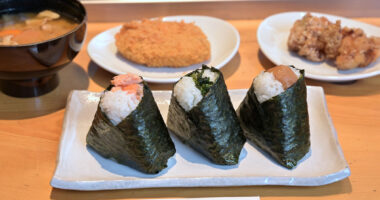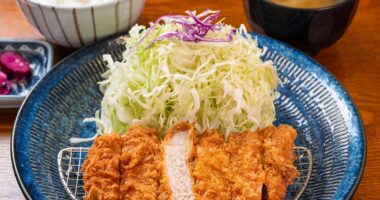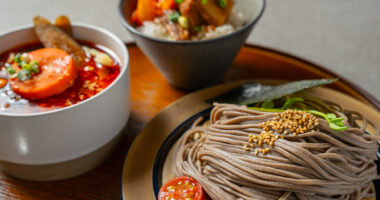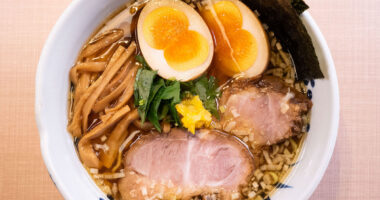No matter how adventurous your appetite may be to try out new gourmet cuisine when traveling abroad, there eventually comes a time when you find yourself craving some comfort food. For many people, that comfort comes from the familiar crunch and flavor of fried food. If you find yourself needing to scratch that itch in Japan, the country’s world of 揚げ物 agemono, deep-fried or battered treats, certainly has a wide menu of tasty delights with which to do just that. All around the country, there’s a variety of deep-fried crispy and golden meat, fish, and vegetable morsels bursting with flavor to enrich your foodie journey through Japan.
What Are Agemono?
Agemono refers to a variety of deep-fried or battered dishes in Japanese cuisine. Ranging from bite-sized dishes to main course meals, agemono consist of seasonal seafood, vegetables, and various types of meat coated in batter or panko breading and then deep-fried. Depending on the type of fried ingredient, agemono are often served with a thick and tangy version of a Japanese Worcestershire-type sauce, tartar sauce, or simply a lemon with which to provide a splash of citrus.
Where To Get Agemono
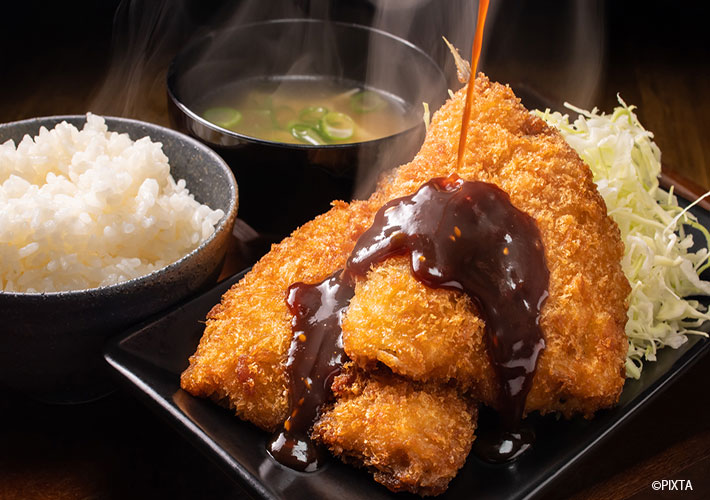
While often eaten as snacks, agemono can also be the main course of a traditional Japanese set meal.
Because agemono are anything fried or breaded and battered, you can find them at virtually every type of eatery in Japan. Depending on the type, they can be enjoyed as tapas-like snacks at Japanese bars and pubs, the main dish of traditional set meals, festivals, and are sold at convenience stores and supermarkets as ready-to-eat hot snacks. A particularly great way to try multiple types is to head to any of Japan’s many shopping arcade streets, where you can buy an an assortment as takeaway from butcher shops.
Types Of Agemono
Options for those seeking out delicious agemono in Japan are plenty, as so many different regional and seasonal delicacies are fried up into delicious bites. While there are certainly many more, here are a few of the most common and popular agemono that you can find on many menus throughout Japan:
メンチカツ menchi katsu (ground meat cutlet): Menchi katsu are deep-fried cutlets of minced meat, usually served as round and thick patties. They contain a flavorful mixture of ground beef or pork, onions, and seasoning. Crispy on the outside but pleasantly juicy on the inside, menchi katsu are among the most popular fried foods in Japan. When served at a restaurant, they are usually paired with a bed of shredded cabbage and optionally topped with Japanese Worcestershire sauce or tonkatsu sauce.
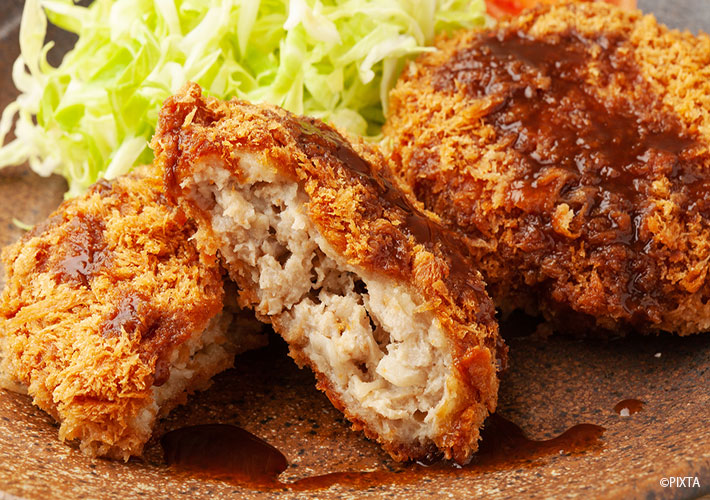
Menchi katsu served with a drizzle of sauce and a side salad.
You can often find menchi katsu in burger and sandwich form as well.
ハムカツ hamu katsu (ham cutlet): Deep-fried ham cutlets prepared in the same manner as menchi katsu. Ham katsu are a popular item at izakaya pubs and butcher shops, but are very often used as crispy fillings for sandwiches and hot dog-like buns.
As you may have guessed, these two agemono are part of Japan’s wide menu of delectable katsu, which we introduced in more detail here.
エビフライ ebi furai (fried shrimp): These large shrimp are breaded with panko breadcrumbs, then deep-fried until crispy and brown. They are typically eaten with Japanese Worcestershire sauce, tartar sauce, or a squeeze of lemon. You’ll often find ebi fry as a side in bento or traditional set meals.
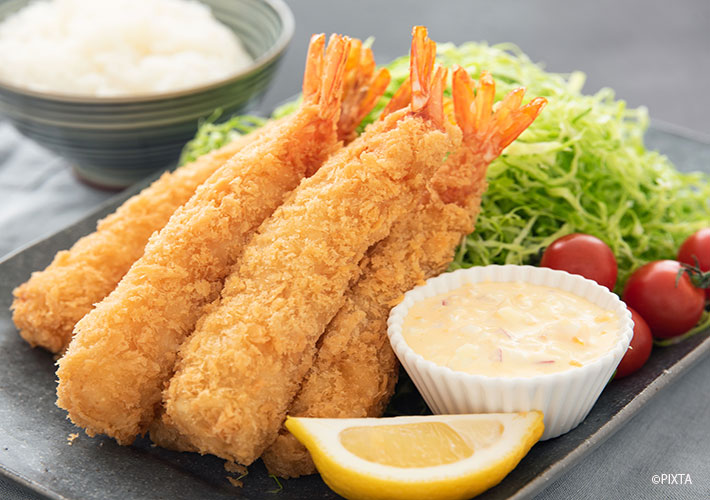
Ebi fry are common toppings for soba noodles and even curry, but these jumbo shrimp are big enough to be a meal of their own.
アジフライ aji furai (fried horse mackerel): Aji Fry, or deep-fried horse mackerel coated in panko breadcrumbs, is a staple of both Japanese home cooking and set meals at restaurants. Like ebi fry, aji fry is usually paired with Japanese Worcestershire sauce, tartar sauce, or lemon, as well as miso soup and white rice in a set.

Seafood fans will want to make sure to try aji fry while in Japan.
カキフライ kaki furai (fried oyster): Kaki fry are fried oysters prepared and served similar to ebi fry and aji fry. Kaki fry are crispy and crunchy on the outside, but maintain their juicy and succulent texture on the inside. While they are available all throughout Japan, it’s recommended to try them in seafood-centric areas or restaurants.
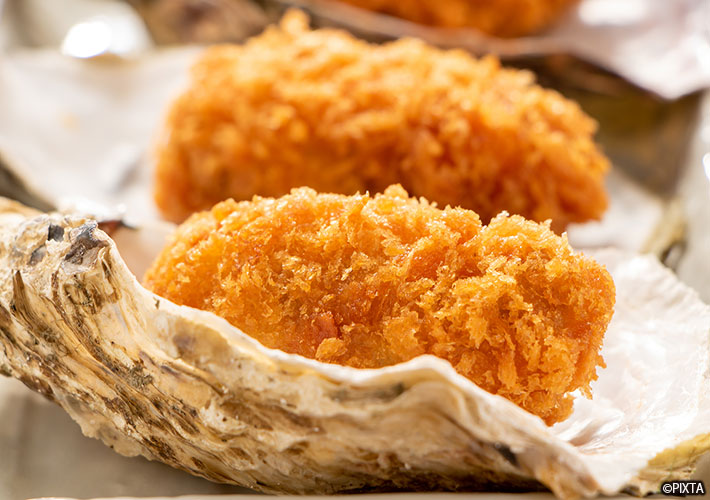
Kaki fry, Japanese fried oysters, are highly recommended in winter when oysters are in season.
コロッケ korokke (croquette): Japanese croquettes serve up a mixture of mashed potatoes, chopped meat or seafood, and veggies (such onions, carrots, or corn) rolled up into patties. The patties are then coated in flour, eggs, and breadcrumbs, then deep-fried.
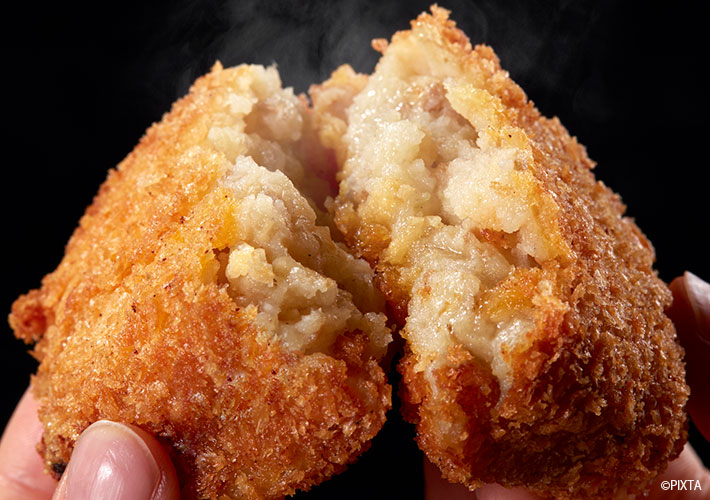
Japanese croquettes have different ingredients depending on region or shop, but are always packed with flavor.
カニクリームコロッケ kani kurīmu korokke (crab cream croquette): Crab cream croquettes are a version of Japanese croquettes stuffed with savory crab meat, onions, parsley, and a creamy Béchamel sauce.
In terms of price, agemono are quite affordable, whether you’re enjoying them as an individual snack or as part of a meal. Individual snacks sold at a food stand, butcher’s shop, or convenience store tend to be in the range of 100 to 300 JPY. When ordering agemono as a side dish at an izakaya, you should expect to pay in between 300 and 800 JPY. When ordering a traditional Japanese set meal with agemono as the main course, you can expect to part with somewhere between 800 and 1,000 JPY.
Tips For Enjoying Agemono
Japan’s menu of agemono covers a wide range of combinations of crispy texture and flavorful ingredients, so there’s bound to be a snack to satisfy the appetite of any fried food lover. As you may have noticed above, a number of agemono are served with Japanese Worcestershire sauce, tartar sauce, or fresh lemon to squeeze. While there are typical pairings, there are no rules or taboos to worry about when adding some extra seasoning to your agemono of choice, so feel free to mix and match to your heart’s content and figure out what tastes best for you.
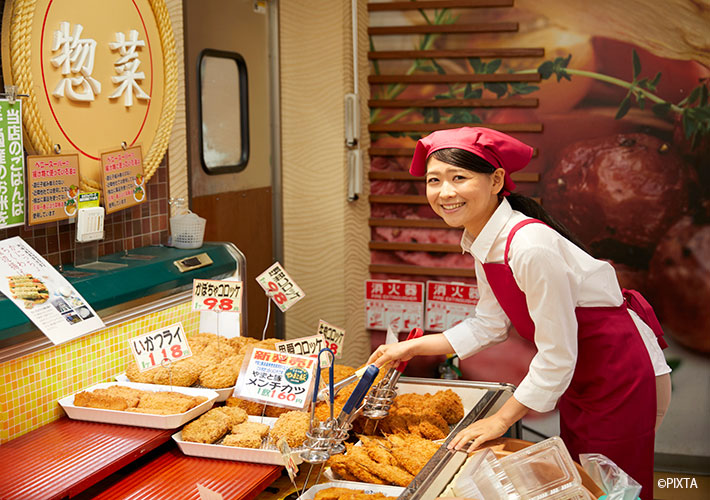
Many Japanese supermarkets have deli sections where you can pick out different types of agemono.
While agemono are often found in set meals at restaurants or bento, it may be a good idea to try picking up different individual types from butcher shops, food stands, convenience stores, or the deli section of a supermarket. That way you can try out various kinds of deep-fried delights to determine which fit your tastes, then hunt those down at restaurants.
Ultimately, Japan’s world of fried foods is delightfully deep and delicious. Whether you’re craving a bit of crispy comfort food for a snack, or the battered centerpiece of a gourmet meal, agemono provide a tasty avenue to continue your journey through Japanese cuisine. If you have a favorite Japanese food, try and search out its deep-fried relative and see if you can find your favorite agemono as well.

